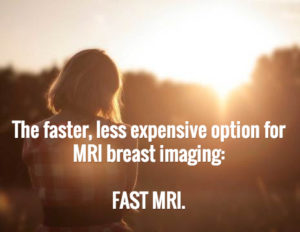 “Jill, it’s that time of the year again,” teases Bosom Buddy. They remind each other when it’s time for a mammogram.
“Jill, it’s that time of the year again,” teases Bosom Buddy. They remind each other when it’s time for a mammogram.
“But it hurts! I won’t go!,” retorts Jill in her annual custom. “You’re only squeezed for seconds. It won’t hurt that bad,” comes the quick and customary reply.
Jill and Bosom Buddy race off to the Breast Center for their annual exam, praying they don’t have breast cancer.
Mammograms have been proven to save lives. Yes! Mammography is the mainstay of screening, but it is far from perfect as mammography may only identify 50% of breast cancers, especially in dense breasts.
Dense breasts are breasts that appear white, as opposed to black, on mammography. Cancers are also white, so dense or “white” breasts can have their cancers missed by mammography. Ultrasonography is performed in addition to screening mammograms in those breasts that are dense, since ultrasound can identify many of these cancers that cannot be seen on mammography.
But a breast MRI is even better than mammography and ultrasound combined. MRI can find many more tumors and find them when they are smaller.
A breast MRI can also find many lesions that are not cancerous but are benign. However, this cannot always be determined by the MRI and a biopsy is needed to differentiate a cancer from a lesion sometimes. These lesions are called “false positives”, because these are lesions that look suspicious but are benign on biopsy.
The problem with false positives is the cost and the anxiety. We’d rather not pay to biopsy benign (non-cancerous) nodules and we’d rather not cause so much anxiety. But it is better to have a false positive than to miss a cancer.
Breast MRI is costly and therefore, while a good choice to image the breast, MRI is not a good choice to screen the breast for cancer in the general population. High cost for many women equals lots of money. A breast MRI is good to screen for breast cancer in women at high risk for breast cancer as there are far fewer women at high risk and the benefit of finding cancers in these women is less costly treatment.
Today we have another option: the FAST MRI. A recent article and editorial published in the Journal of Clinical Oncology described the technique and the benefit of a FAST MRI.
In short, a traditional breast MRI takes 20-60 minutes. A baseline, or non-contrast set of images is acquired, then contrast is injected via an IV and a few minutes later a set of contrast images is acquired. Finally, in another 10-20 minutes, a final set of delayed images is acquired. This breast MRI is very accurate, but very time consuming and expensive.
A FAST MRI uses only the non-contrast set of images and the first contrast-enhanced set of images. These two image sets are then converted into an MIP image that the radiologist can interpret quickly and accurately.
If the radiologist does not see any abnormalities, then the FAST MRI is negative and you can be 99% certain that no breast cancer is in your breast. If a lesion is identified, then further imaging studies and evaluation can be performed.
The advantage of the FAST MRI is that the cost is cheaper and the negative predictive value is higher. In other words, when a FAST MRI is read as negative, it is significantly less likely to be hiding a breast cancer than a negative mammogram. FAST MRI saves time and saves money.
Fast MRI: more accurate screening for more women.
